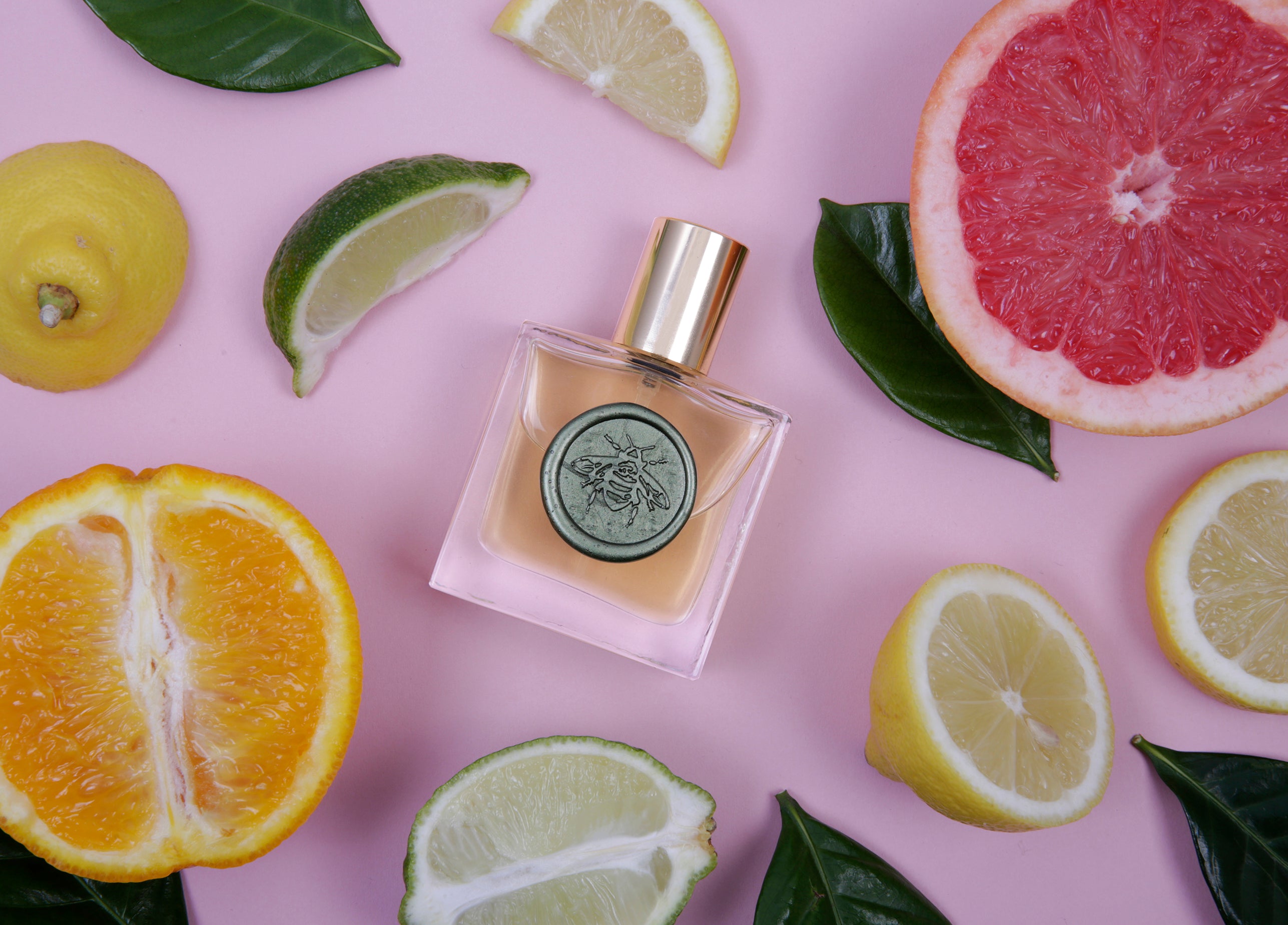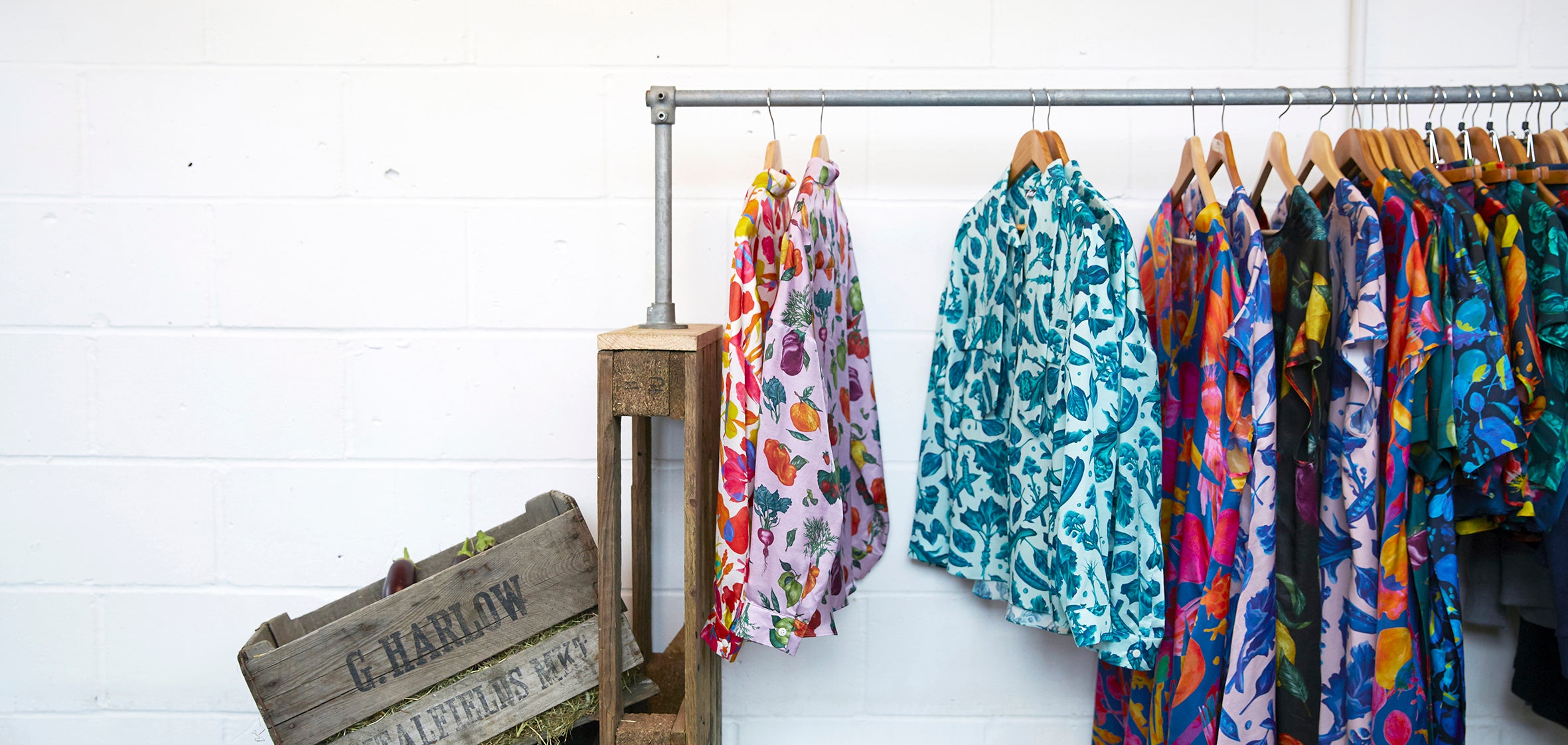Fast Fragrance

In recent years the movement for demanding better transparency in the fashion industry has been spearheaded by brilliant campaigns such as Fashion Revolution’s ‘Who Made My Clothes?’ Conscious consumers are asking important questions about what goes into the products they buy and what sort of sustainable practices - if any - fashion brands have in place. While we rightfully seek to hold the brands accountable that continue to operate unethically and applaud those who are devoted to making the appropriate changes, we are overlooking another multi billion dollar behemoth within the fashion industry: their Perfume.
Think about it. How many of us own a Chanel dress or Tom Ford suit, yet have a Chanel or Tom Ford fragrance? The global perfume market size was valued at USD 31.4 billion in 2018 and is expected to expand at a CAGR of 3.9% from 2019 to 2025. If we put the same pressure on the perfume industry as we have been on the fashion industry perhaps we can start seeing the changes desperately needed.
But what is fast fragrance and why does it matter? Sadly, most fragrances on the market today are ‘fast’ and they are toxic to our health and environment.
As with all investigations, let’s start from the beginning.
The Egyptians, Romans, Persians, Hebrews and Arabs are recorded as the civilisations attributed to the development of fragrance and perfume. They used natural ingredients to harness Mother Nature’s boudoir.
In the 19th century the Industrial Revolution was born and the working middle classes emerged. This created a new shopping dynamic and a shift into mass consumption grew.
Artisans were replaced by manufacturers, and perfumers - once botanical alchemists - were replaced by chemists. Scientists discovered that they could imitate nature’s scent for a fraction of the cost.
Guerlain chemists began the synthetics revolution in 1889 by pouring three synthetics into its perfume Jicky. Natural fragrances became replaced with a fast concoction of scent creating chemicals still used to this day. The perfume you love comprised of rose and sandalwood, isn’t rose or sandalwood. They are synthetic doppelgängers.
As with fast fashion, this comes at a price. Who pays the price for fast fragrance? Certainly not the self-regulated fragrance industry who can hide their toxic chemicals behind the single ingredient ‘fragrance’ and ‘parfum’ with no accountability.
We are the ones who pay the dangerous price. Animals and wildlife pay the price. The environment pays the price. Why is this lack of transparency so deceptive and dangerous?
A report by the National Academy of Sciences noted that 95% of chemicals used in synthetic fragrances include toxic chemicals linked to cancer, birth defects, central nervous system disorders and allergic reactions.
In September 2018 the Breast Cancer Prevention Partners put out a scathing report against synthetic fragrances called Right to Know stating that the best way to avoid breast cancer is to avoid synthetic fragrance. Let's repeat that. The best way to avoid breast cancer is to avoid synthetic fragrance!
There are no standards in place for many of the most controversial fragrance ingredients of concern including known carcinogens such as styrene, pyridine, or benzophenone; or the use of phthalates, a hormone disruptor used to make scent linger. Most of the basic science studies on fragrance ingredients are conducted by the manufacturers themselves.
Self-regulation is not acceptable – especially when public health is at risk. When the industry doesn’t want us to know that ‘the same ingredients that are in Chanel No. 5, are some of the same ingredients in [your] toilet bowl cleaner’ we have a serious problem. This quote is from an eye-opening documentary called Stink! which we highly recommend to anyone interested in seeing how far the rabbit hole goes.
We live in a free market society. People have a choice, for example, to consume junk food if they want to, but at least the labels (finally) tell you what is inside the package. Consumers can then make an informed choice. But when it comes to fragrance (and mind you, this is all products containing fragrance including perfumes, colognes, cosmetics, beauty, cleaning and home fragrances), we are in the dark. We have absolutely no idea what we are getting.
Look at your products containing fragrance. In the ingredients you will see the nebulous singular word ‘parfum’ or ‘fragrance’. This is a loophole. This is how the industry gets away with not telling you what is in the product and can hide up to hundreds of toxic chemicals.
They claim it is to protect trade secrets, but with innovations in reverse engineering technology, this excuse is moot. Without proper fragrance ingredient disclosure, consumers have no way of knowing what they are being exposed to.
Some well-intentioned companies may not even realise there is a problem. For example, a vegan perfume company may not use any animal products or materials tested on animals, but if ‘parfum’ or ‘fragrance’ is listed in the ingredients, they are still harming animals. Synthetic fast fragrance bio-accumulates and does not readily break down in the environment. They have been found in fish and other marine life and stored in the fat of animals. While the perfume may be vegan from source to shelf, it is no longer vegan once it has been used.
In addition, green companies who boast eco-friendly policies yet have products containing that pesky ingredient are still sadly causing environmental damage. The chemicals used in synthetic fragrances are derived from petroleum. Published in the journal Science, a study finds that using scented products emit the same amount of chemical vapours as petroleum emissions from cars.
The bottom line is this, perfume ads showing models frolicking in a floral field is just as misleading as a fashion company claiming to be ethical while selling a £1 bikini. We have been dutifully asking ‘who made my clothes?’, and it is now time to ask another question, ‘what is in my fragrance?’.
By Daphna Rowe, Founder of Lovorika
About our perfume.
BEE is 100% organic. All the fragrant botanicals of BEE are organic essential oils certified by The Soil Association. The dry oil is a natural coconut oil emollient that has been certified by EcoCert.
Handmade in London in small batches, this perfume also comes in a custom one of a kind Gung Ho drawstring bag upcycling offcuts from the collection. The perfume bottle itself is refillable, so if you would like a reorder - please send it back to receive 10% off!



